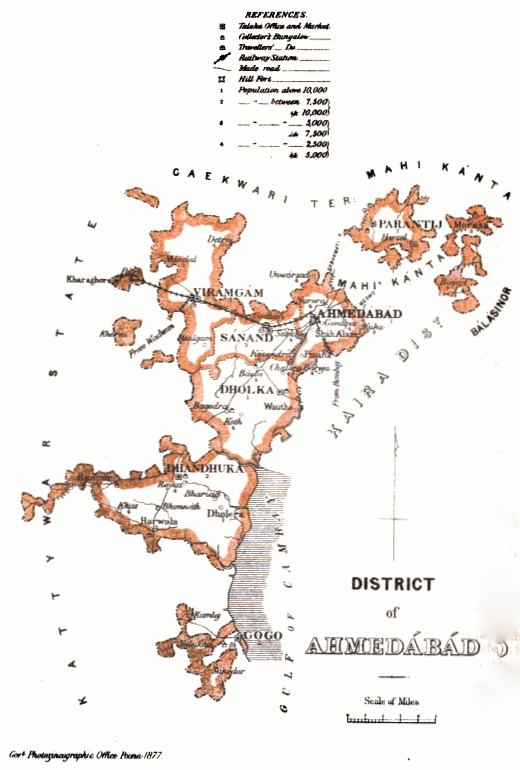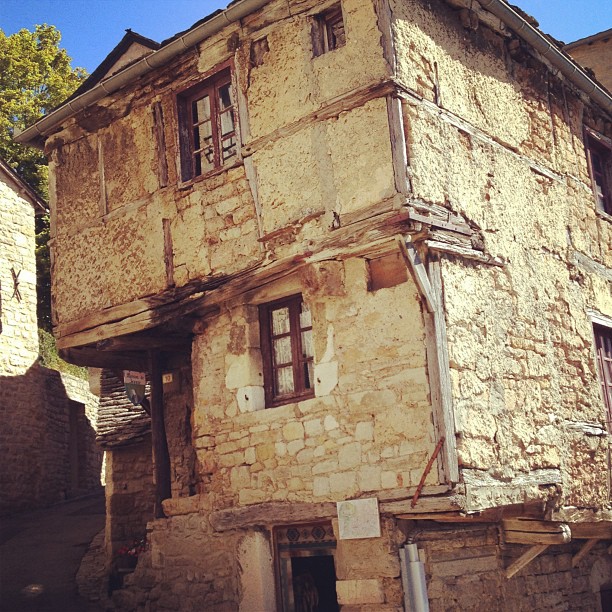|
Jordanus
Jordanus (-), distinguished as JordanofSeverac ( la, Iordanus de Severaco; oc, Jordan de Severac; french: Jourdain de Séverac; it, Giordano di Séverac) or JordanofCatalonia ( la, Jordanus Catalanus; ca, Jordà de Catalunya), was a Catalan Dominican missionary and explorer in Asia known for his ''Mirabilia Descripta'' describing the marvels of the East. He was the first bishop of the Roman Catholic Diocese of Quilon, the first Roman Catholic diocese in India. Travels Jordanus was perhaps born at Sévérac-le-Château, north-east of Toulouse. Possibly a disciple of Jerome de Catalonia, also known as Hieronymus Catalani, in 1302 Jordanus may have accompanied St Thomas of Tolentino, via Negropont, to the East; but it is only in 1321 that we definitely discover him in western India, in the company of Thomas and his companions. Ill-luck detained them at Thane in Salsette Island, near Bombay; and here Jordanus's companions were killed on 8 and 11 April 1321. Jordanu ... [...More Info...] [...Related Items...] OR: [Wikipedia] [Google] [Baidu] |
Roman Catholic Diocese Of Quilon
The Diocese of Quilon is a Latin Church ecclesiastical jurisdiction or diocese of the Catholic Church based in the southern Indian city of Kollam. It is a suffragan in the ecclesiastical province of the metropolitan Archdiocese of Trivandrum. The Diocese of Quilon covers an area of 1,950 km2 (753 square miles) that contains a population of some 4.8 million. At least 4.8% of the people in the area are Catholic. The history of the Latin Church in Quilon begins with the erection of a diocese on 9 August 1329. This diocese was later suppressed. The present day Diocese of Quilon was established as a apostolic vicariate on 15 March 1853 by bifurcating the Apostolic Vicariate of Verapoly. It was elevated as a diocese on 1 September 1886. , Paul Antony Mullassery is the bishop of the Diocese of Quilon. History Early history According to tradition, St. Thomas the Apostle established seven churches along the southern part of west coast of India, and Quilon (pronounced Koy- ... [...More Info...] [...Related Items...] OR: [Wikipedia] [Google] [Baidu] |
Ghogha
Ghogha is a census town in Bhavnagar district in the state of Gujarat, India. It is situated on the mid-western bank of the Gulf of Khambhat. It was an important historical commercial port on the Arabian Sea until the development of nearby Bhavnagar in the nineteenth century. Etymology The name Gogha has been traced to the famous Rajput warrior and hero Gogobava. There is an old mosque which is since 15th century and it is believed that companions of Muhammad came from the Arabian Sea. A more likely derivation is from the shell, ''goghala'', common along the coast. Demographics In 1872, it had a population of 9,571. As of the 2011 census of India, Ghogha had a population of 12,208; 49% male and 51% female, and 12.71% of the population was under 6 years of age. The average literacy rate was 70% (below the national average of 74.4%) with male literacy being 77%, and female literacy 63%. Historical information The port of Gogha has been active since the 5th century CE and flou ... [...More Info...] [...Related Items...] OR: [Wikipedia] [Google] [Baidu] |
Quilon
Kollam (), also known by its former name Quilon , is an ancient seaport and city on the Malabar Coast of India bordering the Laccadive Sea, which is a part of the Arabian Sea. It is north of the state capital Thiruvananthapuram. The city is on the banks of Ashtamudi Lake and the Kallada river. It is the headquarters of the Kollam district. Kollam is the fourth largest city in Kerala and is known for cashew processing and coir manufacturing. It is the southern gateway to the Backwaters of Kerala and is a prominent tourist destination. Kollam has a strong commercial reputation since ancient times. The Arabs, Phoenicians, Chinese, Ethiopians, Syrians, Jews, Chaldeans and Romans have all engaged in trade at the port of Kollam for millennia. As a result of Chinese trade, Kollam was mentioned by Ibn Battuta in the 14th century as one of the five Indian ports he had seen during the course of his twenty-four-year travels. [...More Info...] [...Related Items...] OR: [Wikipedia] [Google] [Baidu] |
Dominican Order
The Order of Preachers ( la, Ordo Praedicatorum) abbreviated OP, also known as the Dominicans, is a Catholic mendicant order of Pontifical Right for men founded in Toulouse, France, by the Spanish priest, saint and mystic Dominic of Caleruega. It was approved by Pope Honorius III via the papal bull '' Religiosam vitam'' on 22 December 1216. Members of the order, who are referred to as ''Dominicans'', generally carry the letters ''OP'' after their names, standing for ''Ordinis Praedicatorum'', meaning ''of the Order of Preachers''. Membership in the order includes friars, nuns, active sisters, and lay or secular Dominicans (formerly known as tertiaries). More recently there has been a growing number of associates of the religious sisters who are unrelated to the tertiaries. Founded to preach the Gospel and to oppose heresy, the teaching activity of the order and its scholastic organisation placed the Preachers in the forefront of the intellectual life of the ... [...More Info...] [...Related Items...] OR: [Wikipedia] [Google] [Baidu] |
St Thomas Of Tolentino
Thomas of Tolentino ( it, Tommaso di or '; 8 April 1321) was a medieval Franciscan missionary who was martyred with his three companions in Thane, India, for " blaspheming" Muhammad. His relics were removed to Quanzhou, China, and Tolentino, Italy, by Odoric of Pordenone. He is now venerated as a saint by the Roman Catholic Church, with his feast day on April 9. Life Thomas was born in Tolentino. in the March of Ancona within the Papal States around 1250 to 1260.. Becoming a Franciscan early in life, he developed a reputation for his strict adherence to its rule, particularly concerning his vow of poverty. A fellow of StNicholas of Tolentino and one of Angelo da Clareno's Spiritual Franciscans, Thomas was jailed twice for his excessive condemnation of luxury. After being released through the intervention of Raymond Godefroy, a new minister general who sympathized with the Spiritualists, Thomas traveled with Angelo da Clareno, Marco da Montelupone, Pietro da Macerata ... [...More Info...] [...Related Items...] OR: [Wikipedia] [Google] [Baidu] |
Sévérac-le-Château
Sévérac-le-Château (; oc, label=Languedocien, Severac del Castèl) is a former commune in the Aveyron department in southern France. On 1 January 2016, it was merged into the new commune of Sévérac-d'Aveyron. The Château de Sévérac is a 13th-century castle that dominates the town. It is open to the public. This new area of 72,724 km2 resulting from the merger of two regions of southern France roughly corresponds to the ancient Languedoc, Haut-Languedoc (Toulouse) and Lower Languedoc (Montpellier) together, but also a part of the province of Biscay centered Auch, and the provinces of Quercy (Cahors, Montauban) and Rouergue (Rodez), all traditional Occitan. Getting finally adds the former province of Roussillon and Cerdagne (Perpignan), meanwhile tradition of Catalan, and the county of Foix. The limits of the region Languedoc-Roussillon, Midi-Pyrénées almost exactly correspond to the limits of the jurisdiction of the former Parliament of Toulouse (with the excepti ... [...More Info...] [...Related Items...] OR: [Wikipedia] [Google] [Baidu] |
Surat
Surat is a city in the western Indian state of Gujarat. The word Surat literally means ''face'' in Gujarati and Hindi. Located on the banks of the river Tapti near its confluence with the Arabian Sea, it used to be a large seaport. It is now the commercial and economic center in South Gujarat, and one of the largest urban areas of western India. It has well-established diamond and textile industry, and is a major supply centre for apparels and accessories. About 90% of the world's diamonds supply are cut and polished in the city. It is the second largest city in Gujarat after Ahmedabad and the eighth largest city by population and ninth largest urban agglomeration in India. It is the administrative capital of the Surat district. The city is located south of the state capital, Gandhinagar; south of Ahmedabad; and north of Mumbai. The city centre is located on the Tapti River, close to Arabian Sea. Surat will be the world's fastest growing city from 2019 to 203 ... [...More Info...] [...Related Items...] OR: [Wikipedia] [Google] [Baidu] |
Latin Church
, native_name_lang = la , image = San Giovanni in Laterano - Rome.jpg , imagewidth = 250px , alt = Façade of the Archbasilica of St. John in Lateran , caption = Archbasilica of Saint John Lateran in Rome, Italy , type = Particular church () , main_classification = Catholic , orientation = Western Christianity , scripture = Vulgate , theology = Catholic theology , polity = Episcopal , governance = Holy See , leader_title = Pope , leader_name = , language = Ecclesiastical Latin , liturgy = Latin liturgical rites , headquarters = Archbasilica of Saint John Lateran, Rome, Italy , founded_date = 1st century , founded_place = Rome, Roman Empire , area = Mainly in Western Europe, Central Europe, the Americas, the Philippines, pockets of Africa, Madagascar, Oceania, with sev ... [...More Info...] [...Related Items...] OR: [Wikipedia] [Google] [Baidu] |
Persian Empire
The Achaemenid Empire or Achaemenian Empire (; peo, 𐎧𐏁𐏂, , ), also called the First Persian Empire, was an ancient Iranian empire founded by Cyrus the Great in 550 BC. Based in Western Asia, it was contemporarily the largest empire in history, spanning a total of from the Balkans and Egypt in the west to Central Asia and the Indus Valley in the east. Around the 7th century BC, the region of Persis in the southwestern portion of the Iranian plateau was settled by the Persians. From Persis, Cyrus rose and defeated the Median Empire as well as Lydia and the Neo-Babylonian Empire, marking the formal establishment of a new imperial polity under the Achaemenid dynasty. In the modern era, the Achaemenid Empire has been recognized for its imposition of a successful model of centralized, bureaucratic administration; its multicultural policy; building complex infrastructure, such as road systems and an organized postal system; the use of official languages across it ... [...More Info...] [...Related Items...] OR: [Wikipedia] [Google] [Baidu] |
Bharuch
Bharuch (), formerly known as Broach, is a city at the mouth of the river Narmada in Gujarat in western India. Bharuch is the administrative headquarters of Bharuch District. The city of Bharuch and surroundings have been settled since times of antiquity. It was a ship building centre and sea port in the pre-compass coastal trading routes to points West, perhaps as far back as the days of the pharaohs. The route made use of the regular and predictable monsoon winds or galleys. Many goods from the Far East (the famed Spice and Silk trade) were shipped there during the annual monsoon winds, making it a terminus for several key land-sea trade routes. Bharuch was known to the Greeks, the various Persian Empires, in the Roman Republic and Empire, and in other Western centres of civilisation through the end of the European Middle Ages.Periplus of the Erythraean Sea [...More Info...] [...Related Items...] OR: [Wikipedia] [Google] [Baidu] |






